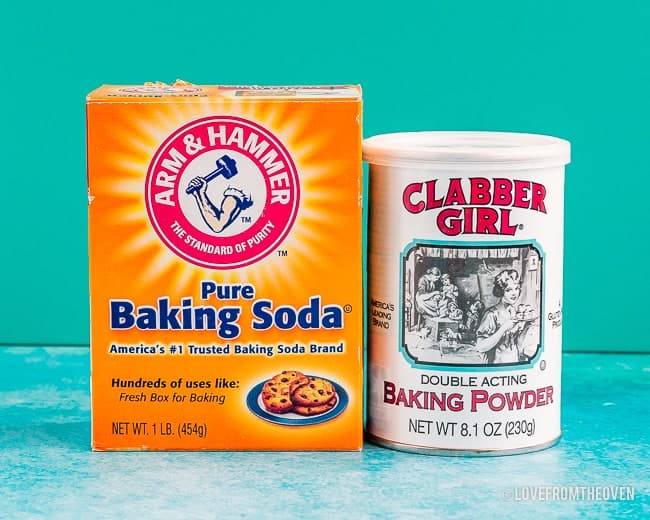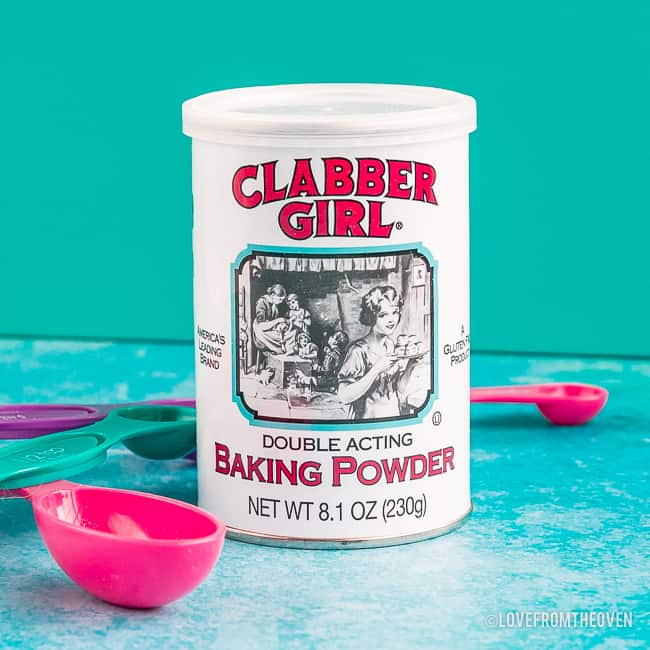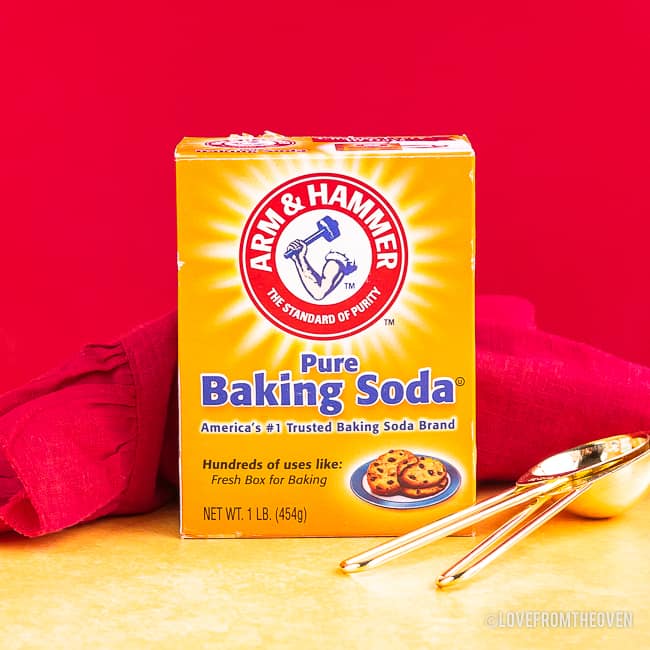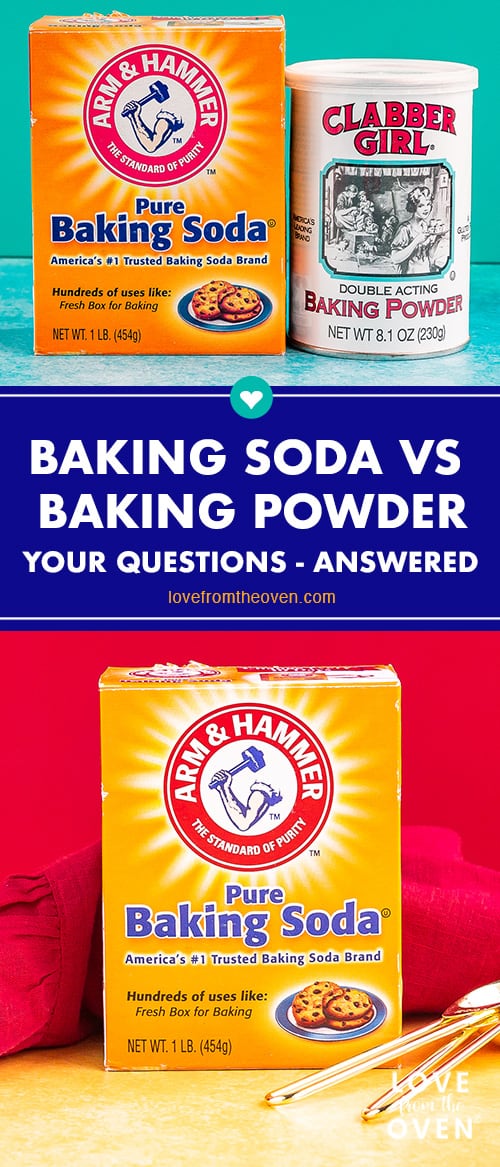Improve your baking skills by understanding the real difference between baking powder and baking soda.
Baking Powder vs Baking Soda
Without baking soda and baking powder, our muffins would be flat, our cookies wouldn’t spread and our pancakes would never be fluffy. Both of these agents are leaveners–they help our baked goods rise. While both leavening agents, baking soda and baking powder are NOT the same.
What’s the difference between baking powder and baking soda?
Chemically speaking, baking soda and baking powder are entirely different. Also known as sodium bicarbonate, baking soda is a base that reacts with acid in a recipe to create carbon dioxide. This gas is what causes your baked goods to rise.
What does baking soda do?
You’ll notice that recipes calling for baking soda also call for some type of acid. Buttermilk, vinegar, lemon juice and even brown sugar contain the acidic quality needed to activate baking soda.
Think back to making baking soda volcanoes when you were a kid. Pour baking soda in a bottle, add white vinegar and boom! You get foamy “lava” bubbling out the top. The exact same reaction is what leavens our breads, muffins, cookies and cakes.
Have you ever noticed a metallic taste in baked goods made with baking soda? That could very well be that there wasn’t enough acid in the recipe to neutralize the taste of the baking soda (base). That’s one of the reasons why it’s important to measure your baking soda carefully!
What does baking powder do?
On the flip side, baking powder already contains the right balance of acid to base. While baking powder does contain baking soda, it also contains cream of tartar which is an acid. Recipes calling for baking powder only usually don’t need any additional acidic ingredients.
This means baking powder is excellent for recipes like my Easy Brownies and Ham and Cheese Biscuits.
Baking Powder Substitute
What should you do when you’re in the middle of baking a batch of biscuits and realize you’re out of baking powder? If you have baking soda and cream of tartar on hand it’s easy to make your own homemade baking powder.
A combination of 1/2 tsp. cream of tartar and 1/4 tsp. baking soda can be substituted for every 1 tsp. of baking powder in a recipe.
For a baking powder substitute without cream of tartar, you can also substitute 1/4 teaspoon of baking soda and a 1/2 teaspoon of vinegar for every teaspoon of baking powder needed.
Baking Soda Substitute
If you can make baking powder by adding acid to baking soda, how do you make a substitute for baking soda?
In a pinch, you can use baking powder in its place by tripling the amount used. So, if a recipe calls for 1 tsp. baking soda, 3 tsp. of baking powder will have a similar effect on its rise.
That said, that much baking powder has the potential to affect the flavor of the finished baked good.
You should also reduce the amount of acid in the recipe to account for the added acid in the baking powder. This can get tricky, so whenever possible it’s always best to stick to the recipe as written!
If baking powder and baking soda are different but serve the same purpose, why do so many recipes call for both?
The long answer to that question requires me to channel my inner scientist and break down ratios of base to acid and the affects of different chemical reactions.
The short answer–and what you really need to know–is that in some recipes both types of leaveners work together to create the best results.
In recipes such as in my Lofthouse Cookies, baking soda alone won’t achieve the soft fluffy results you’re looking for unless you add so much acid that the flavor is ruined. That’s where baking powder comes in. It adds enough acid, along with more leavening power, to give you the texture results you need without adding a “sour” taste.
Baking soda and baking powder are a tiny percentage of most recipes but one of the most important elements.
For most consistent baking results, try to keep both baking powder and baking soda in good supply in your pantry!
Make sure to check out my All About Flour post for helpful information on different types of flour, flour substitutions and how to properly measure flour.
Click To Pin And Save For Later






Leave a Reply